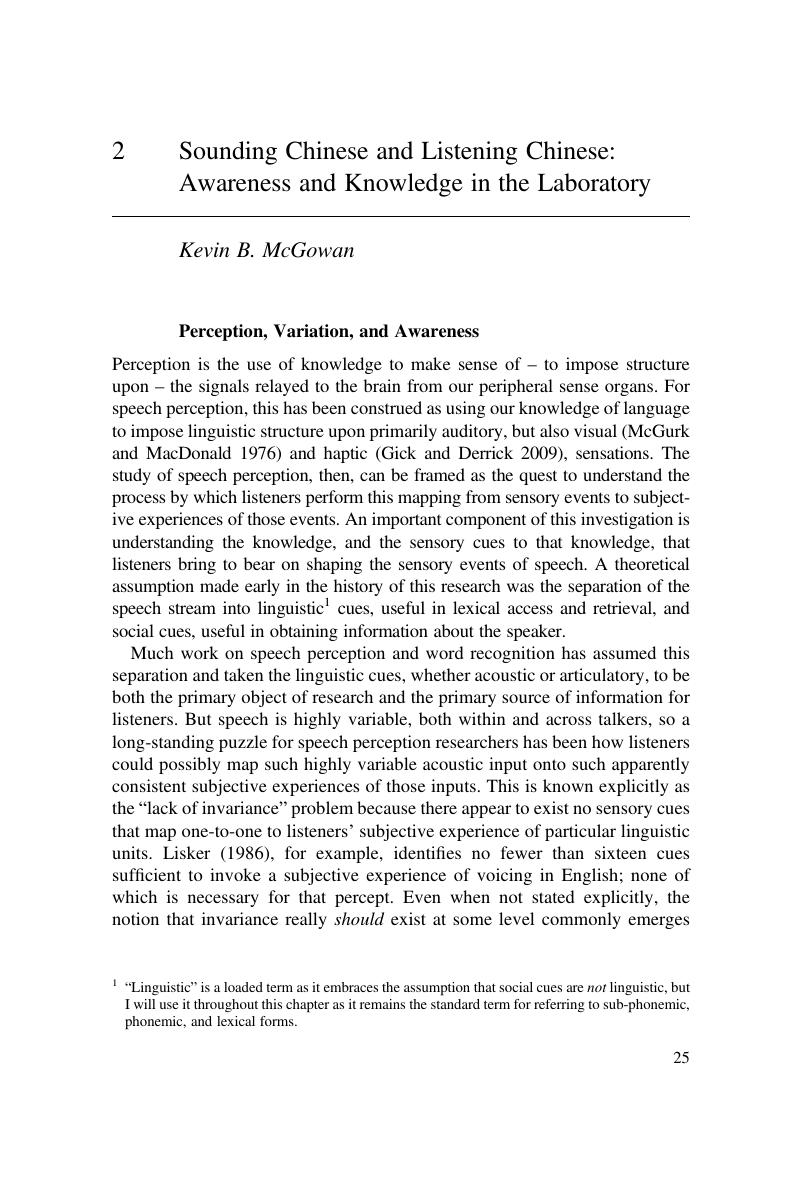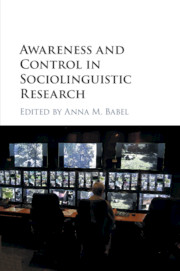Book contents
- Awareness and Control in Sociolinguistic Research
- Awareness and Control in Sociolinguistic Research
- Copyright page
- Contents
- Figures
- Maps
- Tables
- Contributors
- Foreword
- Preface
- 1 Awareness, Salience, and Stereotypes in Exemplar-Based Models of Speech Production and Perception
- 2 Sounding Chinese and Listening Chinese: Awareness and Knowledge in the Laboratory
- 3 Awareness and Acquisition of New Dialect Features
- 4 Processing Grammatical Differences: Perceiving versus Noticing
- 5 What It Means to Be an Outsider: How Exposure to Regional Variation Shapes Children’s Awareness of Regional Accents in Their Native Language
- 6 Towards a Cognitively Realistic Model of Meaningful Sociolinguistic Variation
- 7 Place-Linked Expectations and Listener Awareness of Regional Accents
- 8 Whaddayaknow now?
- 9 Silence as Control: Shame and Self-Consciousness in Sociolinguistic Positioning
- 10 Theorizing Salience: Orthographic Practice and the Enfigurement of Minority Languages
- 11 Sociolinguistic Agency and the Gendered Voice: Metalinguistic Negotiations of Vocal Masculinization among Female-to-Male Transgender Speakers
- Index
- References
2 - Sounding Chinese and Listening Chinese: Awareness and Knowledge in the Laboratory
Published online by Cambridge University Press: 05 July 2016
- Awareness and Control in Sociolinguistic Research
- Awareness and Control in Sociolinguistic Research
- Copyright page
- Contents
- Figures
- Maps
- Tables
- Contributors
- Foreword
- Preface
- 1 Awareness, Salience, and Stereotypes in Exemplar-Based Models of Speech Production and Perception
- 2 Sounding Chinese and Listening Chinese: Awareness and Knowledge in the Laboratory
- 3 Awareness and Acquisition of New Dialect Features
- 4 Processing Grammatical Differences: Perceiving versus Noticing
- 5 What It Means to Be an Outsider: How Exposure to Regional Variation Shapes Children’s Awareness of Regional Accents in Their Native Language
- 6 Towards a Cognitively Realistic Model of Meaningful Sociolinguistic Variation
- 7 Place-Linked Expectations and Listener Awareness of Regional Accents
- 8 Whaddayaknow now?
- 9 Silence as Control: Shame and Self-Consciousness in Sociolinguistic Positioning
- 10 Theorizing Salience: Orthographic Practice and the Enfigurement of Minority Languages
- 11 Sociolinguistic Agency and the Gendered Voice: Metalinguistic Negotiations of Vocal Masculinization among Female-to-Male Transgender Speakers
- Index
- References
Summary

- Type
- Chapter
- Information
- Awareness and Control in Sociolinguistic Research , pp. 25 - 61Publisher: Cambridge University PressPrint publication year: 2016
References
- 6
- Cited by



